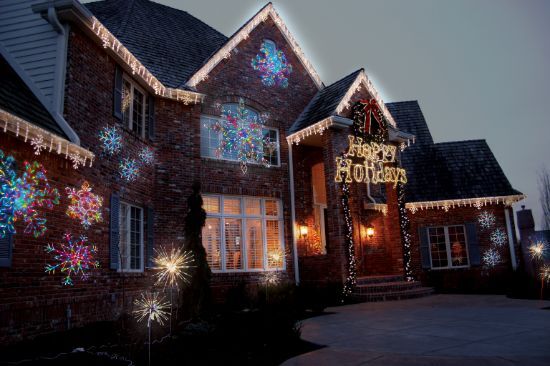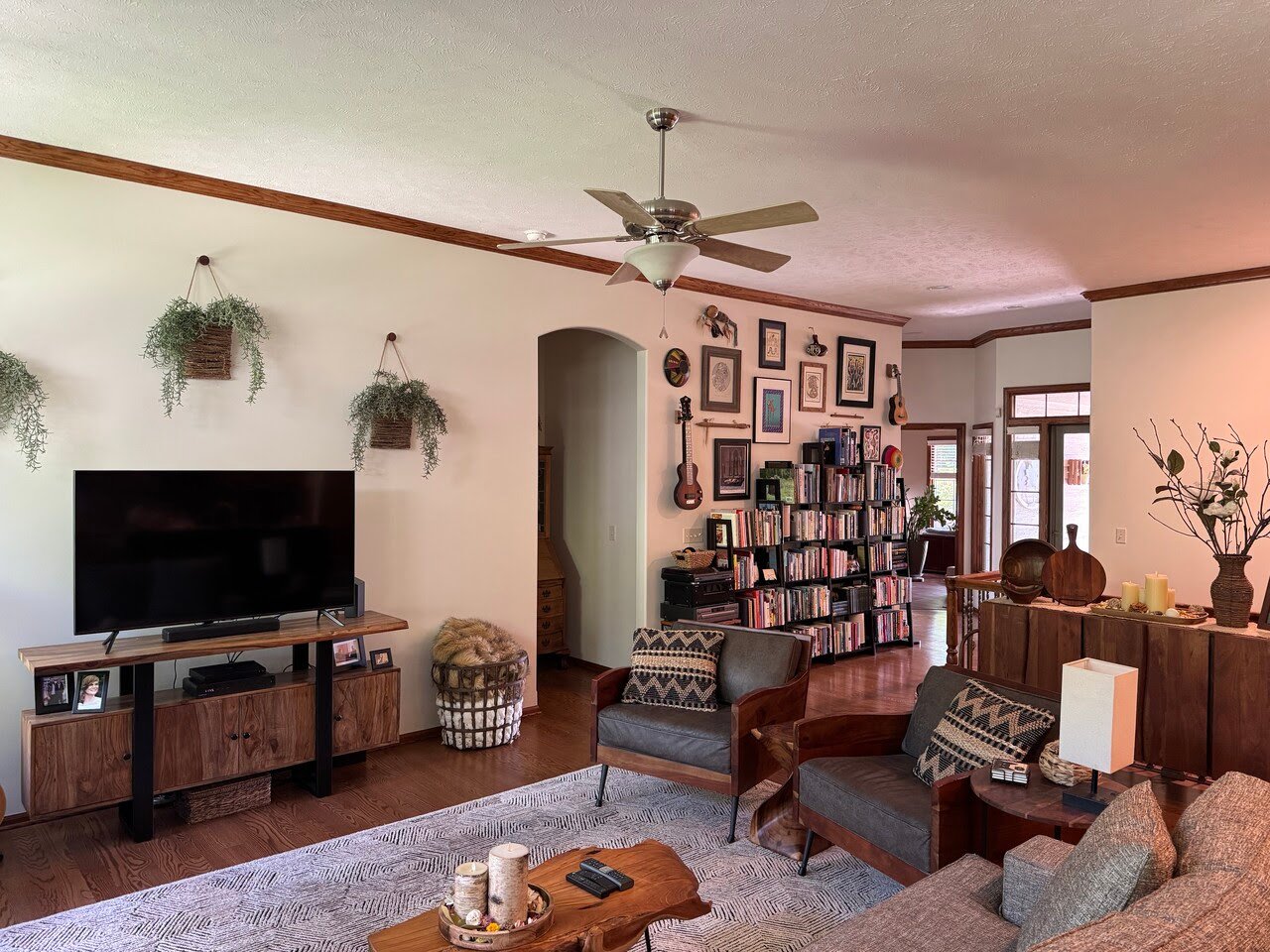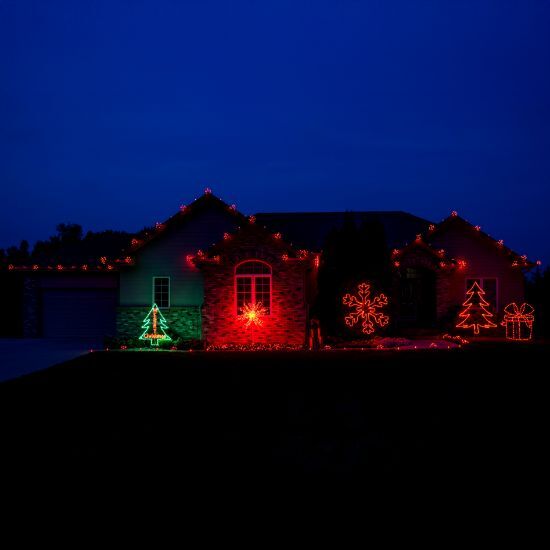Wallpaper vs Interior Painting: Cost, Quality, & More
May 25th, 2024
4 min read
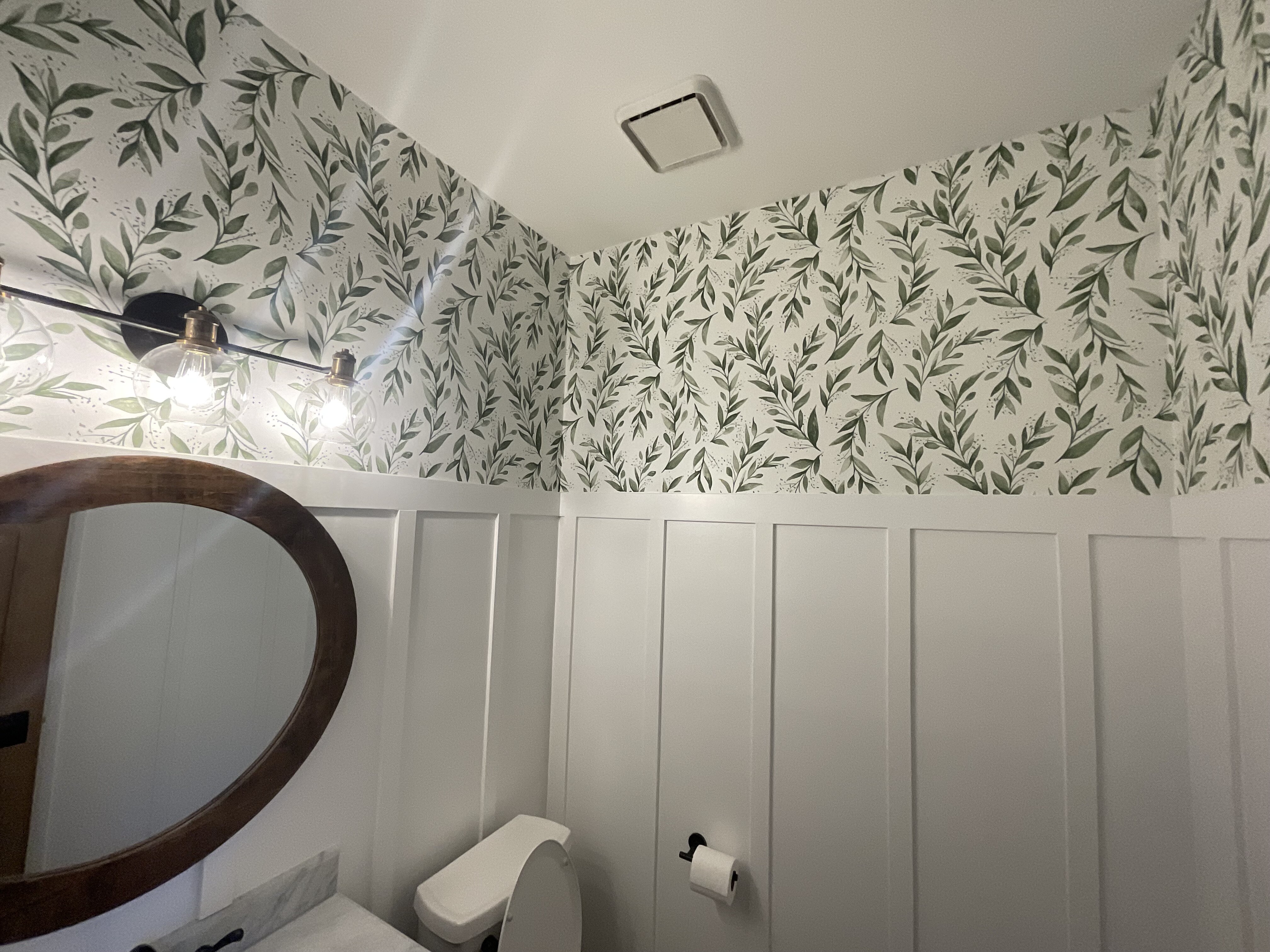
Are you ready to update your home's walls, but are unsure of the best option? Are you deciding between painting the walls or putting up wallpaper?
Both options have their pros and cons, and understanding them can help you make an informed decision that suits your preferences, lifestyle, and budget.
Brush & Roll Painting has been a premier interior painting company in Omaha since 1996. We value transforming homes with interior paint, but we know wallpaper might be a better option for your project, and we don’t want you to make any mistakes while investing in your home.
So in this article, we'll delve into the differences between interior wall painting and wallpaper installation to help you determine which option is better suited for your home.
1. Aesthetic Appeal of Interior Painting vs Wallpaper
.png?width=588&height=307&name=Website%20Image%20Size%20(11).png)
Interior Wall Painting: Painting your walls offers thousands of options for color choices and finishes, allowing you to achieve virtually any painted look you desire. From bold, vibrant hues to subtle, neutral tones, the possibilities are endless.
Additionally, you can incorporate various painting techniques such as color blocking, ombre, or stenciling to add depth, patterns, and visual interest to your walls.
Interior painting also allows for options to highlight a specific wall by painting an accent wall, shiplap, or board and batten for more depth.
-May-24-2024-07-58-46-6311-PM.png?width=551&height=288&name=Blog%20Post%20Image%20Size%20(3)-May-24-2024-07-58-46-6311-PM.png)
Wallpaper: Peel and stick wallpaper also provides a wide range of design options, including intricate patterns, textures, and prints that can create a unique and sophisticated ambiance in your home. Whether you prefer classic florals, modern geometric designs, or faux finishes like wood or brick, wallpaper allows you to customize your space according to your personal style.
Overall the design options for wallpaper are nearly endless, while paint colors only range from 3,000 to 4,000.
2. Durability and Maintenance of Interior Painting vs Wallpaper
.jpg?width=496&height=279&name=Main%20photo%20size%20(15).jpg)
Interior Wall Painting: High-quality paint can withstand daily wear and tear, making it a durable option for busy households. However, painted walls may be more prone to scuffs, scratches, and stains, especially in high-traffic areas. Fortunately, touch-up painting is relatively easy and can help maintain the appearance of your walls over time.
-May-24-2024-08-18-06-3383-PM.png?width=567&height=296&name=Blog%20Post%20Image%20Size%20(6)-May-24-2024-08-18-06-3383-PM.png) Wallpaper: While wallpaper can be durable and washable, it may not hold up as well as paint in areas prone to moisture or humidity, such as bathrooms and kitchens. Additionally, wallpaper can be more challenging to clean, as certain types may be sensitive to moisture and require gentle care to avoid damage. However, modern advancements have led to the development of washable and scrubbable wallpapers that offer greater durability and ease of maintenance.
Wallpaper: While wallpaper can be durable and washable, it may not hold up as well as paint in areas prone to moisture or humidity, such as bathrooms and kitchens. Additionally, wallpaper can be more challenging to clean, as certain types may be sensitive to moisture and require gentle care to avoid damage. However, modern advancements have led to the development of washable and scrubbable wallpapers that offer greater durability and ease of maintenance.
3. Interior Painting vs Installing Wallpaper
-1.png?width=561&height=293&name=Untitled%20design%20(5)-1.png)
Interior Wall Painting: Painting walls is a straightforward process that can typically be completed in a shorter time frame compared to wallpaper installation. With the right preparation and technique, you can achieve professional-looking results with minimal hassle. However, proper surface preparation, including patching holes, sanding, and priming, is essential to ensure a smooth and long-lasting finish.
-May-24-2024-08-12-54-3982-PM.png?width=469&height=245&name=Blog%20Post%20Image%20Size%20(5)-May-24-2024-08-12-54-3982-PM.png)
Wallpaper: Installing wallpaper can be more time-consuming and labor-intensive than painting, especially for intricate patterns or textured designs. The process involves measuring, cutting, applying adhesive, and carefully aligning each strip of wallpaper to achieve a seamless look. Additionally, proper surface preparation is crucial to ensure adhesion and prevent bubbles or wrinkles. While wallpaper installation may require more effort upfront, the results can be stunning and transformative.
Both options can be done on your own or you can hire a professional.
4. Cost of Interior Painting vs Wallpaper
-Mar-11-2024-02-52-48-8172-PM.png?width=574&height=300&name=Blog%20Post%20Image%20Size%20(3)-Mar-11-2024-02-52-48-8172-PM.png)
Interior Wall Painting: Painting walls is generally more cost-effective than installing wallpaper, especially if you choose a basic paint color and finish.
The cost of paint, primer, and supplies is relatively low for the value of the items, making it a budget-friendly option if you are looking to refresh your space without breaking the bank.
With a larger project with multiple walls, trim, and ceilings, you may opt to hire a professional to paint your interior. This will initially increase the cost of doing it on your own, but will result in a clean, durable finish.
To give you a good idea of the cost of interior wall painting, a medium-sized room (12x15 ft) will cost an average of $600 to $800 professionally or $150 to $200 to do yourself.
It's important to remember the proper steps that goes into interior painting that ensures a clean, flawless finish.
-May-24-2024-07-43-19-3982-PM.png?width=591&height=309&name=Blog%20Post%20Image%20Size%20(4)-May-24-2024-07-43-19-3982-PM.png)
Wallpaper: The cost of wallpaper can vary widely depending on the brand, design, and quality of the material. While basic wallpaper options may be comparable in price to paint, luxury or custom wallpapers can be significantly more expensive.
Additionally, you may incur additional expenses for tools, adhesives, and professional installation services if you're not comfortable tackling the project yourself.
The cost of wallpaper will vary, primarily depending on where you get the wallpaper from and if it is traditional or peel-and-stick. It will be significantly more affordable if you choose to do one wall rather than a full room.
Doing the project on your own could range from $350 to $600 for a full-size room. Hiring a professional to install wallpaper, could range from $1,000-1,500 for a full-sized room. It may also be more difficult to find a painter that installs wallpaper rather than interior painting.
5. Interior Painting vs Wallpaper Flexibility and Longevity
 Interior Wall Painting: One of the advantages of painting walls is the flexibility to change colors or finishes as often as you like. Whether you're updating your decor or refreshing your home's look, painting allows for easy customization and adaptation to your evolving style preferences. With proper maintenance and occasional touch-ups, painted walls can maintain their appearance for many years.
Interior Wall Painting: One of the advantages of painting walls is the flexibility to change colors or finishes as often as you like. Whether you're updating your decor or refreshing your home's look, painting allows for easy customization and adaptation to your evolving style preferences. With proper maintenance and occasional touch-ups, painted walls can maintain their appearance for many years.
-May-24-2024-08-20-52-9358-PM.png?width=574&height=300&name=Blog%20Post%20Image%20Size%20(7)-May-24-2024-08-20-52-9358-PM.png)
Wallpaper: While wallpaper offers a unique and impactful design solution, it can be less flexible in terms of changing decor or updating your space. Removing wallpaper can be a time-consuming and labor-intensive process, requiring steamers, solvents, and careful scraping to avoid damaging the underlying surface. Additionally, patterns or textures may become outdated over time, necessitating the need for replacement or renovation.
Interior Painting vs Wallpaper
In conclusion, both interior wall painting and wallpaper installation offer distinct advantages and considerations.
Painting walls provides a versatile and cost-effective way to refresh your space with endless color options and design flexibility. On the other hand, wallpaper offers a sophisticated and customizable alternative that can elevate the aesthetic appeal of any room.
Ultimately, the decision between painting and wallpapering will depend on your personal preferences, the inspiration for the room you are transforming, budget, and lifestyle factors. Whether you prioritize durability, ease of maintenance, or aesthetic impact, weighing the pros and cons of each option can help you make an informed choice that enhances the beauty and comfort of your home for years to come.
Since operating a painting company in Omaha in 1996, Brush & Roll Painting has helped homeowners transform their homes. We strive to help homeowners make the best decisions for their home improvement projects.
If you are not ready to get an exact quote for your painting project, use our pricing calculator to get a general estimate for your project. By simply entering your room's measurements and specific painting needs, you can gain a clearer understanding of the cost of your painting project. This tool is designed to help you make informed decisions and plan your budget effectively. Click the button below to start calculating!
Kaylea is the Brush & Roll Painting Content Manager. Kaylea is a Journalism and Media Communications summa cum laude graduate with a minor in Marketing from the University of Nebraska at Omaha. Kaylea manages the marketing for Brush & Roll Painting.
Topics:
















-Jul-23-2025-02-21-33-5468-PM.png?width=800&height=418&name=Blog%20Post%20Image%20Size%20(2)-Jul-23-2025-02-21-33-5468-PM.png)


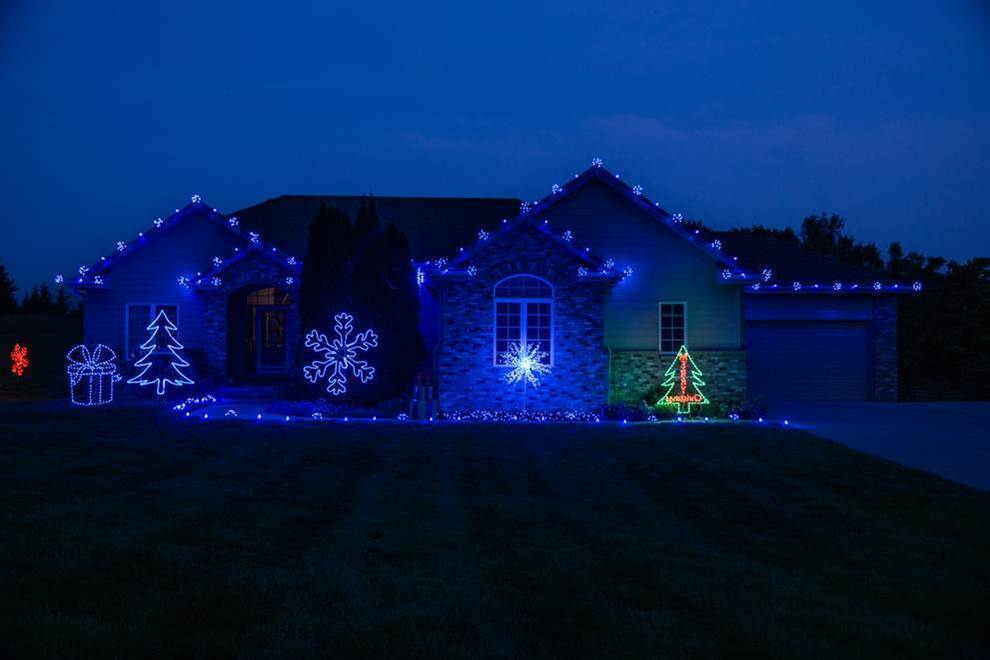
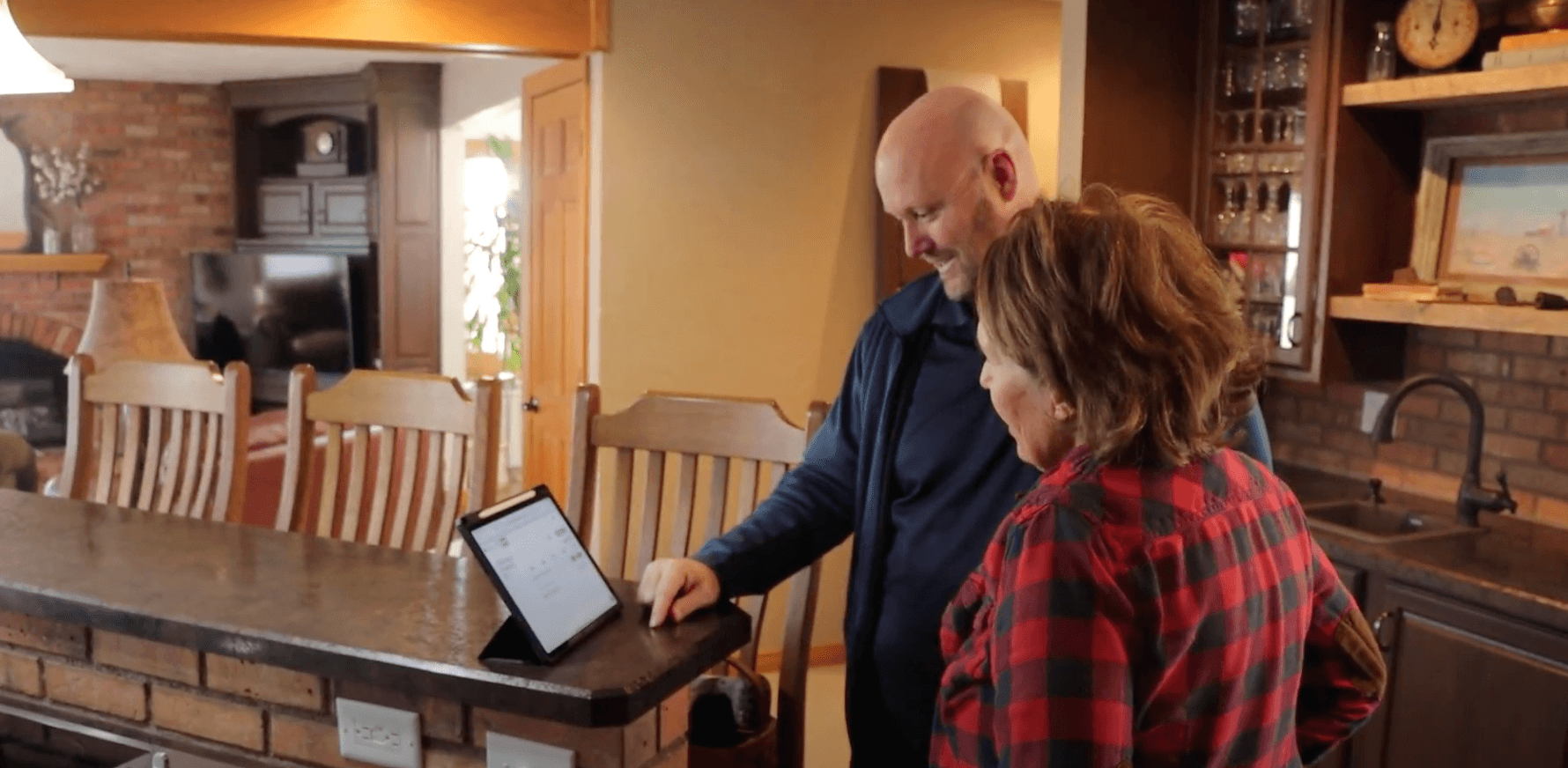
-Oct-22-2025-01-39-19-5208-PM.png?width=800&height=418&name=Blog%20Post%20Image%20Size%20(1)-Oct-22-2025-01-39-19-5208-PM.png)



